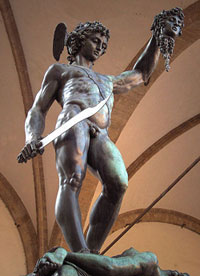History of The Processes of Casting (or Lost Wax Casting)
 Peoples of different cultures and eras, such as the ancient Chinese, the Egyptians, the Incas and the Aztecs knew the production of tools and other objects in bronze, the technique of lost wax casting.
Peoples of different cultures and eras, such as the ancient Chinese, the Egyptians, the Incas and the Aztecs knew the production of tools and other objects in bronze, the technique of lost wax casting.
With the same process / lost wax casting, Benvenuto Cellini's Perseus realized in the sixteenth century, an outstanding masterpiece of Italian Renaissance sculpture.
During the first half of the sixth century. BC in Greece, precision casting (or lost wax casting) were used to melt monumental statues of great artistic value. Among the works remained remember the Riace Bronzes, ritorvati at sea in 1907 in conditions of exceptional integrity, even going back to over 2500 years ago.
This tecnic emerged at the beginning of XX century when some laboratories and dental labs began to make use of the procedure to make dentures.
A substantial development of this technology was realized in the USA during the Second World War as a result of a research program on the method developed to produce a very reliable and large-scale, turbine blades of aircraft engines turbojet.
Towards the beginning of the 50s the technology was introduced in Europe and found advantageous use in those sectors requiring special steel or special alloys with complex geometric shapes and tight dimensional tolerances.